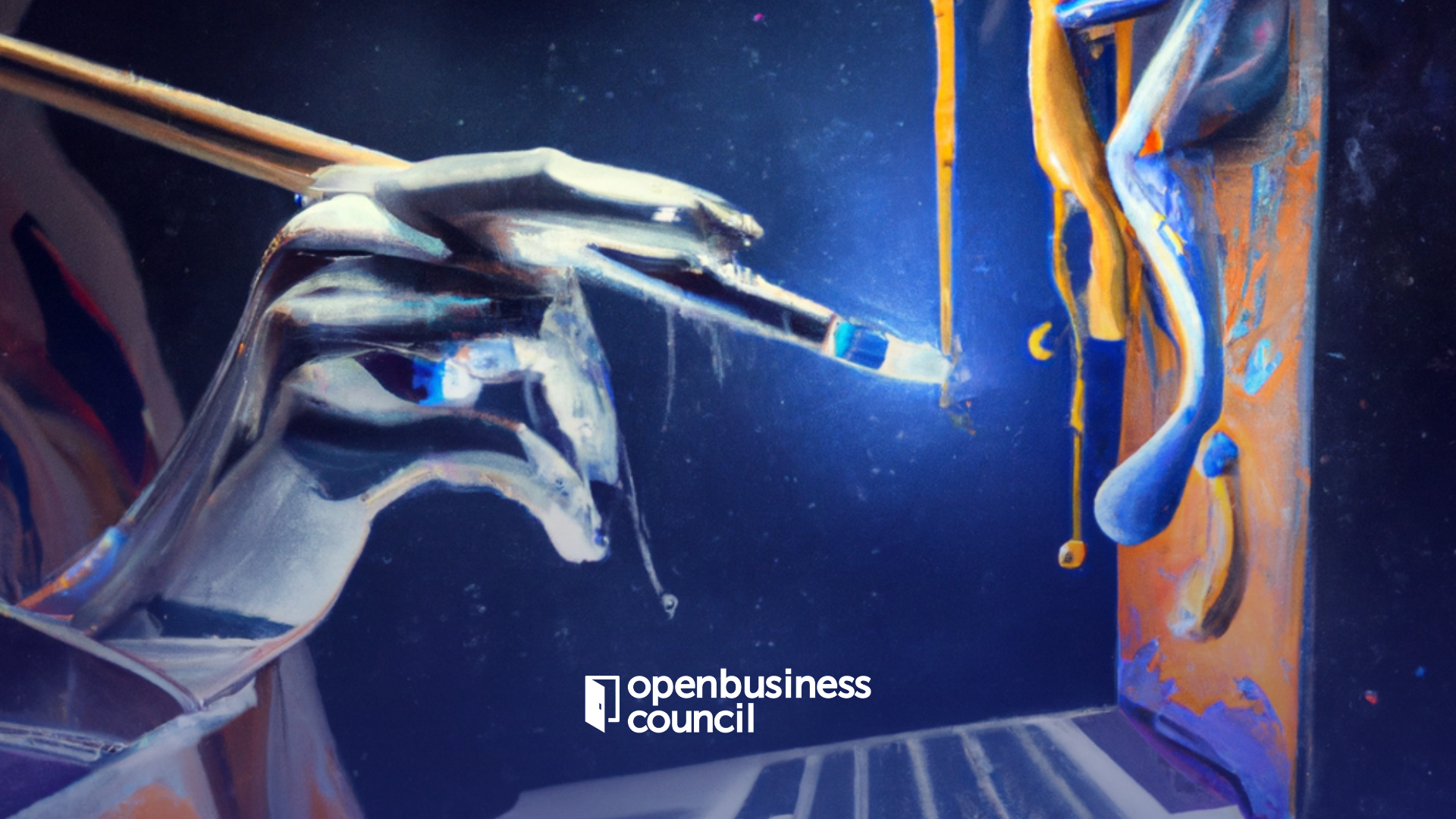NFTs have the potential to revolutionize the way that creators monetize and share their work, and to create new opportunities for creators to build and grow their careers in the digital economy. Let’s take a look at the impact of NFTs on the creators economy.
Non-fungible tokens (NFTs) are a type of digital asset that represents ownership of a unique item or asset. They are created using blockchain technology and stored on a decentralized ledger, which makes them unique and verifiable. NFTs have gained popularity in recent years due to their ability to represent ownership of a wide range of digital assets, including artwork, music, videos, and other forms of creative content.
From creators to investors, through users, all can somehow benefit from this new technology. As Mark Cuban, investor, said: “You can sell anything digital using NFTs. We can sell virtual Mavs gear, sneakers, art, pictures, videos, experiences, anything our imagination can come up with we can sell. We are looking at adding virtual jewelry, accessories, and clothing that we create to real pictures in social media. So you can add cool Mavs virtual sneakers that look as real as the ones on your feet to your posts. What really changed everything was smart contracts. They came along, and that created DeFi and NFTs. That’s what changed the game. That’s what got me excited. That’s why it’s a lot like the internet.”
And while investors and businessmen can benefit from them, creators and artists are the ones that have a better opportunity in the rise of NFTs. Prominent DJ Steve Aoki is one of those: “I didn’t even mind not playing shows, and I found new passion in collecting cards, baseball cards, Pokemon and NFTs. The same time I found cards, the summer of 2020, was the same time I found NFTs. And it’s very similar in that they’re collectibles. But the difference is, with NFTs is that I can be a creator as well as a collector,” he said on Forbes in Nov 2021.
And since he said that, Steve Aoki has explored NFTs in different ways. One that caught the attention of the world (and came to become one of the most successful NFT collections) is “Neon Future by Steve Aoki x Maciej Kuciara”. In that collection, 2x Grammy nominated creator Steve Aoki and revolutionary digital artist Maciej Kuciara partnered with Tom Bilyeu of Impact Theory Studios to release a one-of-a-kind hybrid art and music NFT Collection, “Neon Future by Steve Aoki x Maciej Kuciara”. A collection that took its inspiration from Impact Theory’s “Neon Future” sci-fi comic series originally created by Steve Aoki & Tom Bilyeu.
Music, painting, animation… the possibilities for the creators are endless, powering a growing creator economy.

But, what is the creator economy?
The creator economy refers to the economic system that supports creators of content, such as artists, musicians, writers, and other creative professionals. It includes the various ways in which creators can monetize their work, as well as the platforms and tools that enable them to do so.
According to a report by McKinsey, the global creative economy was valued at $2.7 trillion in 2016 and is expected to grow to $4.4 trillion by 2030. This includes a wide range of sectors, such as advertising, film, music, and publishing. In terms of specific data points, it is worth noting that:
• Creators on YouTube, the video-sharing platform, earned $6 billion in 2020, up 25% from 2019.
• In the United States, the number of artists and related workers increased by 16% between 2011 and 2019, reaching nearly 2.3 million workers.
• The global market for digital art was valued at $2.6 billion in 2020, with NFT sales accounting for a significant portion of this market.
• In the United States, the number of self-employed workers in the creative industries increased by 20% between 2011 and 2019, reaching nearly 1.3 million workers.
• These data points demonstrate the growing importance of the creator economy and the diverse range of opportunities that it offers for creative professionals.
In the past, monetizing creative work often required creators to work with intermediaries, such as record labels or publishing houses, who would help distribute and sell their work. However, with the proliferation of the internet and the rise of digital platforms, creators now have more direct ways to reach and engage with their audience. This has led to the emergence of the creator economy, which enables creators to monetize their work through a variety of channels, including subscriptions, sponsorships, merchandise sales, and other forms of direct payment.
The creator economy has also been fueled by the rise of social media and other online platforms, which have given creators new ways to promote and share their work with a wider audience. Many creators have been able to build large followings and achieve significant success through their online presence, and this has led to the growth of the creator economy as a whole.
Overall, the creator economy represents a shift towards a more decentralized and democratized model of content creation and distribution, which empowers creators to take control of their careers and monetize their work in new ways. In this sense, NFTs have the potential to revolutionize the creator economy by providing a new way for creators to monetize their work and for fans to support them.
What are the challenges that artists face when using NFTs?
There are several potential challenges and problems that artists may face when using NFTs to monetize their work:
Complexity: The process of creating and selling NFTs can be complex and require a certain level of technical expertise. Artists may need to learn about blockchain technology, cryptocurrency, and smart contracts in order to effectively use NFTs.
Lack of understanding: Many people, including artists and potential buyers, may not fully understand NFTs and how they work. This can make it difficult for artists to effectively explain the value of their NFTs and may limit their potential market.
Limited market: The market for NFTs is still relatively small and may not be accessible to all artists. This can make it difficult for artists to reach a large audience and sell their NFTs.
High fees: The process of creating and selling NFTs often involves paying various fees, such as gas fees for blockchain transactions and commission fees for marketplaces. These fees can add up and may eat into the profits that artists earn from the sale of their NFTs.
Lack of control: Once an NFT is sold, the artist loses control over how it is used and displayed. This can be a problem if the NFT is used in ways that the artist finds offensive or inappropriate.
Lack of long-term value: Some experts have raised concerns about the long-term value of NFTs, as it is not clear whether they will retain their value over time. This may make artists hesitant to invest significant time and resources into creating NFTs.
What are the opportunities for creators?
Non-fungible tokens (NFTs) offer a number of opportunities for artists to monetize their work and reach a wider audience. Some of the key benefits of NFTs for artists include:
Direct monetization: NFTs enable artists to sell their work directly to collectors and fans, without the need for intermediaries such as galleries or agents. This can help artists to retain a greater share of the profits from their work.
Increased visibility: NFTs can help artists to gain greater exposure for their work, as they can be shared and displayed on various online platforms. This can help artists to build a larger following and increase their reach.
New revenue streams: In addition to selling NFTs, artists can also use NFTs to create new revenue streams, such as through the sale of NFT-powered merchandise or through the creation of NFT-powered experiences, such as virtual reality exhibitions.
Increased control: NFTs give artists greater control over their work and how it is used. They can specify the terms under which their NFTs can be displayed and used, which can help to protect their intellectual property and prevent unauthorized use of their work.
Long-term value: Some experts believe that NFTs have the potential to increase in value over time, as they represent ownership of a unique and verifiable digital asset. This may make them an attractive investment for collectors and fans, which could provide a long-term revenue stream for artists.
Overall, NFTs offer a number of exciting opportunities for artists to monetize their work and build their careers in the digital economy.
NFTs work and their value is real. The legendary football player, Leo Messi, recently kicked off his new journey in the digital space when he launched his NFT collection with the name “Messiverse”.

The NFT collection was created by the renowned artist BossLogic, and the artwork includes collectibles titled “Worth the Weight”, “Man from the Future”, “The King Piece”, and a lot more. The NFTs sold $3.4 million on the first day of their release, demonstrating his star power.
Other examples include alternative artists, not that well known, but who have found in NFTs the right medium to sell their creations.
The most successful story can be found in Beeple. Also known as Mike Winkelmann, Beeple is a digital artist who has gained widespread recognition for his NFT artwork. In March 2021, Beeple's "Everydays: The First 5000 Days" NFT collection sold for $69.3 million at Christie's, setting a new record for the highest price ever paid for an NFT.
Hallyu is a South Korean artist who has gained fame for his NFT artworks inspired by traditional Korean culture and mythology. In December 2021, Hallyu's "Myths and Legends" NFT collection sold for over $2.6 million on the Nifty Gateway platform.
The future looks promising, but we are still in the early stages of technology, so It is difficult to predict exactly what the future impact of NFTs will be in the art world, as the technology is still relatively new and evolving.
However, it is clear that NFTs have the potential to revolutionize the way that artists monetize and share their work, and to create new opportunities for artists to build and grow their careers in the digital economy.